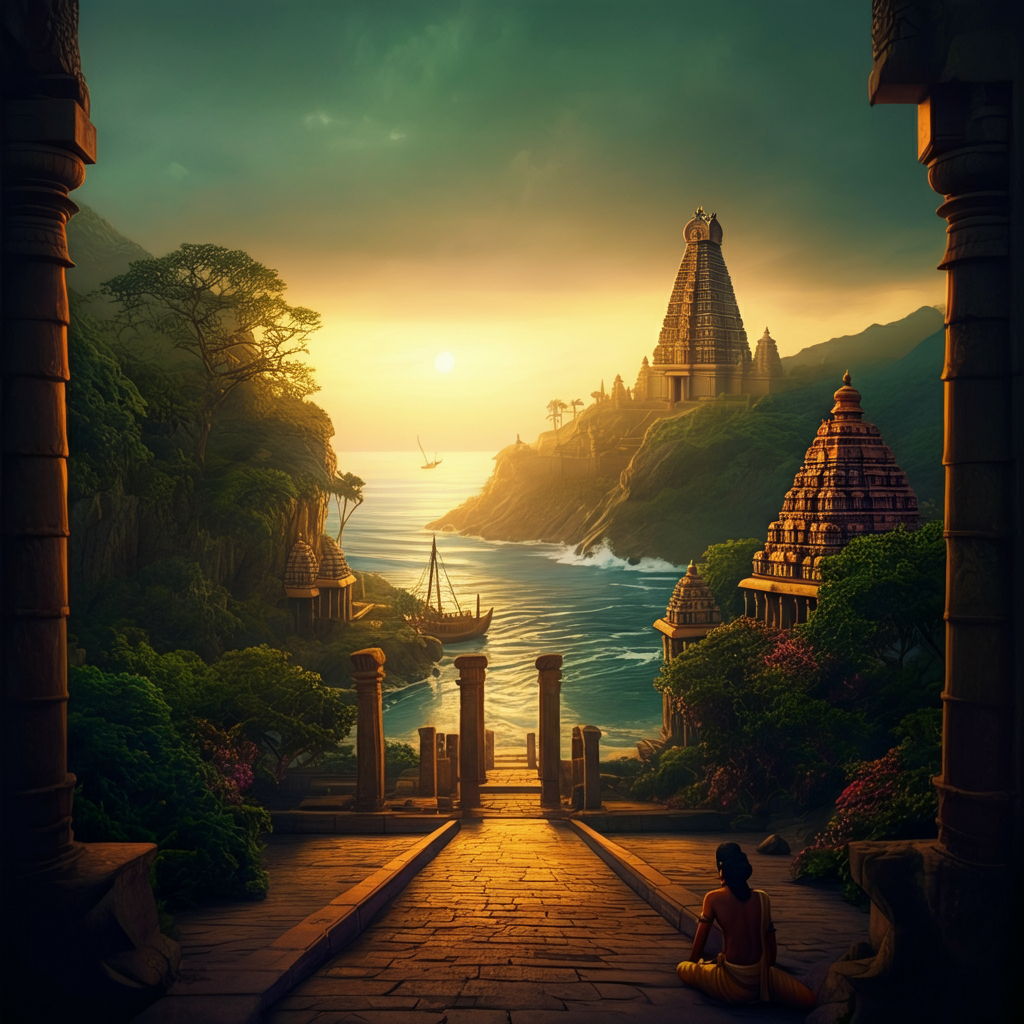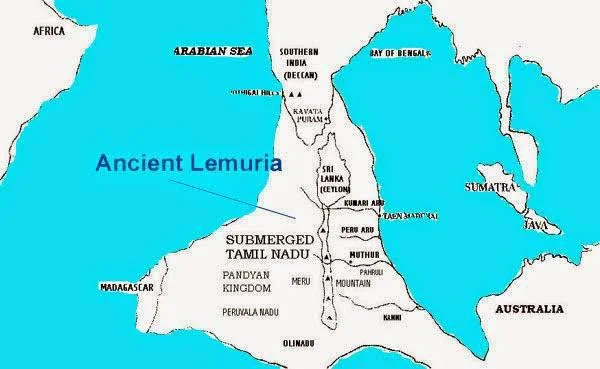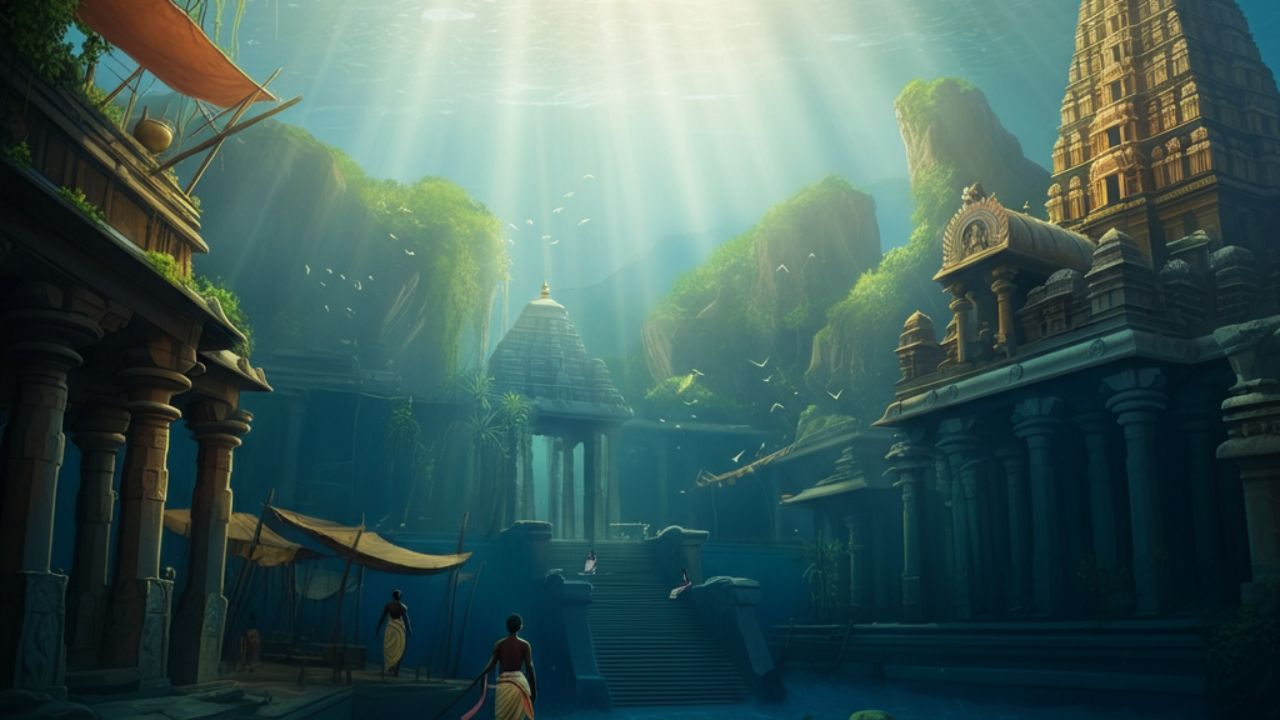The Search for Kumari Kandam: Myth, History and Reality
Is Kumari Kandam a myth or a reality? It has attracted historians, mythologists and Tamil lovers for decades. It is said to be a mythical land, believed to be the home of an ancient and advanced Tamil civilization, and the recent developments have brought countless stories, debates and theories that leave everyone wondering if there really was such a thing in Tamil history. But what exactly is Kumari Kandam? Where was it located, and is there any truth to the claim of its existence? In this blog, we will explore these interesting questions and also understand its cultural and historical significance.

What is Kumari Kandam and why is it important?
Kumari Kandam is a mythical continent mentioned in ancient Tamil literature and stories. We don’t get a proper description of it, but we get to hear a lot of interesting theories about it. It is said that it was a vast land south of India, which sank into the Indian Ocean due to serious events. The concrete reasons behind this have not been revealed. Tamil traditions believe that this land was home to a highly advanced Tamil civilization, and it is considered a symbol of Tamil culture. Many people believe that Kumari Kandam was the origin place of the Tamil language and the legendary Tamil Sangams, which were ancient literary academies, were held here.
There are many mysteries behind this place… and it is said that this land was spread over 7000 km, which was quite vast. Many historians have put forward their claims on this, but science has not found concrete evidence for any claim till date.
Kumari Kandam was divided into a total of 49 regions and two rivers named Kumari and Pakaruli flowed through this land, there was also a hill here called Kumari Koodu. It also had 2 major cities like Thenmadurai and Kapatapuram. Knowing all this, we have probably started believing that these are not completely fictional stories, there was something that is still hidden from us and may come to light in the coming years.
Are Kumari Kandam and Lemuria the same?
The story of Kumari Kandam is often associated with Lemuria, another imaginary land proposed by 19th century scientists. This continent was a place of creatures, especially ancient animals like Lemurs, which were named after this continent. Now you must be wondering what can be its connection with Kumari Kandam? So Lemuria was also a continent that was located around today’s Indian Ocean, South Africa, and Australia. Exactly where Kumari Kandam was located, so it has been believed many times that these two islands are the same? And there are some claims that Lemuria did not sink completely, but some parts still exist today, such as Madagascar and Ceylan (Sri Lanka).
So far many scientists have studied the history of these two islands and presented claims, but they have not yet found concrete evidence.

Lemuria map credit – mukkulathor
Where was Kumari Kandam located?
If we talk about its location, Kumari Kandam was located near the present Kanyakumari (southernmost point) and this area extended from South India to Sri Lanka.
In ancient Tamil texts, the geography of Kumari Kandam is described as full of fertile plains, abundant water sources and prosperous civilizations. Early maps based on Tamil literature shown Kumari Kandam connecting India with Madagascar and parts of modern Australia.
What do Tamil texts say about Kumari Kandam?
Many ancient Tamil literary works and commentaries mention the legendary land that sank into the ocean. Some of the prominent mentions are as follows:
- Silappatikaram: This Tamil epic refers to the lost Pandya kingdom which was a real and historical kingdom. Some believe that Kumari Kandam was a land under the rule of the Pandya kingdom.
- Tolkāppiyam: Ancient writings suggest that there was a connection between the drowned land which can be kandam kumari and ancient Tamil culture.
These texts also mention cities that sank into the ocean such as Tenmadurai and Kapadapuram, which were under the Pandya kingdom.
Did Kumari Kandam exist or is it just a myth?
Whether Kumari Kandam was a real continent or just a mythological concept is still a question. While Tamil literature refers to its existence, scientific evidence is not available to support it. Despite the lack of concrete evidence, many experts believe in Kumari Kandam.
How did Kumari Kandam sink?
From what has been discovered so far, it seems that Kumari Kandam sank into the sea due to serious events, such as massive floods or earthquakes. Some researchers speculate that changes in sea level during the ice age contributed to the sinking of the ancient settlements.
However, modern scientific advancements, such as the theory of plate tectonics, claim that it is possible for such islands to have submerged completely.
Is there scientific evidence for Kumari Kandam?
Currently, there is no solid geological evidence to suggest the existence of Kumari Kandam. Theories of continental uplift and submerged areas near India, such as the sunken city of Dwaraka and structures off the coast of Mahabalipuram, make us assume that Kumari Kandam did happen, but conclusive evidence is still lacking.
Despite this, marine geology studies have revealed submerged rocks in the Indian Ocean. Could these be the remains of Kumari Kandam? The question still remains unanswered.
Kumari Kandam and Tamil Identity
After knowing all this, we got an idea that Kumari Kandam is not just a story; It is associated with Tamil identity and culture. For Tamils it represents the antiquity of their civilization and the richness of Tamil language and literature.
In the 20th century, Tamil revivalist and political movements adopted the story of Kumari Kandam to promote Tamil Nadu’s cultural independence and historical significance. Writers such as V.G. Suryanarayana Sastri popularized the idea of ”Kumari Nadu”, making it a symbol of Tamil excellence.
Also Read: The Mystery of Frederick Valentich’s Disappearance: UFO Really Exists..?
हिन्दी मैं पढे : Kumari Kandam: इतिहास और तमिल पहचान का रहस्य
For More Updates Please Join :FaceBook




One thought on “Kumari Kandam: The History and Mystery of Tamil Identity”